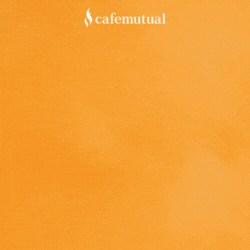Reintroduction of 10% long-term capital gains tax on equity investments in Budget 2018 has triggered renewed interest in ULIPs. Reason: the gains on equity investment through ULIPs continue to remain exempted from tax.
But investors should keep other parameters in mind before investing in ULIPs, caution many advisors.
Let us compare ULIPs and MFs feature by feature to understand why.
Structure:
ULIP is a hybrid product that focuses on investment and insurance while mutual funds are investment products. ULIPs have a five-year lock-in period, whereas mutual funds are liquid. Mutual fund investors can exit the open-end fund any time. This means that the investors of ULIPs have to remain invested with a particular fund even when it is not giving attractive returns.
After the reintroduction of LTCG in equity mutual funds, insurance companies are comparing ULIPs with mutual funds from the cost perspective.
Most financial advisors, though, believe that mutual funds are more cost effective compared to ULIPs. “Except a few online ULIPs, most have various charges and costs that eat into returns. In MFs, all charges collapse into one single head, TER. MFs are transparent and easily accessible and also easy to comprehend,” says Amol Joshi, of PlanRupee.
Suresh Sadagopan, of Ladder7 Financial Advisories, however, says that ULIP costs are competitive, and few ULIPs have even removed the allocation charge.
Mutual funds list the various expenses under expense ratio. Equity funds can charge a maximum of 2.5%, and a debt fund 2.25%, of the average weekly net assets. The largest component of the expense ratio is management-and-advisory fees.
In ULIPs, the different costs come under different heads. These are allocation charges, policy administration charges, fund management charge, mortality charges and surrender charges.
The allocation charges are deducted from the premium upfront. It is a percentage of the premium appropriated towards charges before allocating the units. This ranges between 2-5% annually. This means that out of Rs.100, Rs.98 or Rs.95 will be invested in the market. Mutual funds do not have allocation charges.
Commission
Even though ULIPs are manufactured by insurance companies, the commission paid to advisors is similar to that of mutual fund distributors. Insurance agents are paid a commission based on the premium whereas the mutual fund distributors are paid a commission based on the assets under their advisory.
“As the structure of ULIPs is similar to that of mutual funds, the commission on ULIPs is based on assets. However the trailing commission is lower than that of mutual funds,” Suresh said.
Returns
Mutual funds give higher returns compared to UILIPs, which is why experts recommend mutual funds despite LTCG.
ULIP returns are 60 bps lower than those of mutual funds, shows Morningstar data. The average return of large-cap ULIP fund was 16.54% in the past one year whereas the average large-cap mutual fund was 17.06% as on March 1. The data further shows that large cap funds have outperformed ULIPs from three and five year perspective. Large cap funds have delivered 7.58% or 15.43% returns over three and five year period respectively while large cap focused ULIPs gave returns of 7.46% and 15.12% in the similar time frame.
Comparing the returns of ULIPs to mutual funds is not an ‘apple to apple’ comparison, Suresh says. “The returns of mutual funds are just the returns after excluding all the costs. However, in ULIPs the various costs, except the fund management charge, are also taken while calculating the NAV. Hence, the return showed by ULIPs will not be a correct parameter,” he said.
Transparency
The market regulator has made it compulsory for mutual fund houses to disclose the commission paid to its distributors and disclose the portfolio on a monthly basis.
Even though disclosures are stipulated for ULIPs as well, these are not actively tracked.
Financial advisors say that investors should not jump into ULIPs just because it does not attract LTCG. They say that mutual funds provide investors with a wider choice, easy exit, higher returns, and greater degree of transparency.
Advisors say that investors will be losing money on mortality charges of ULIPs if they already have a term insurance cover. Also, they believe that investors will be better off by buying a term insurance for life cover over ULIPs.






